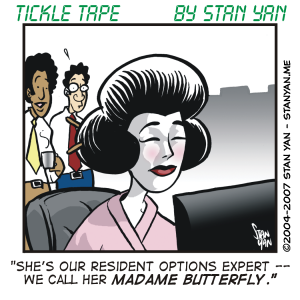While charts show a financial instrument’s price history accompanied by volume, they are also exciting reflections of human behavior. And because they reflect basic human nature, they can be used as a psychological map if you learn to read them correctly.
As technical analysts, we know that stocks, indices, and futures markets often form patterns that appear with similarity, over and over again. While no two patterns resemble each other precisely, recognizable features duplicate each other frequently enough that we can identify and name these patterns and use them to predict price movement. Since these patterns reflect people’s beliefs and emotions, an important aspect of pattern recognition is the ability to understand the underlying human behavior and trade it accordingly.
Many indices and stocks are currently forming—or have already formed—the reversal pattern known as the head-and-shoulders on their daily charts. A head-and-shoulders takes place on a chart (on any time frame), when a stock (for example) rises in an uptrend to a new high. Strong volume lifts the price action to the peak of what results in the top of the left shoulder.
Next, the pullback takes place. The pullback is a reflection of mass psychology; this is when latecomers to the soaring uptrend jump into the game. The moment the pullback reverts, they leap in, pushing the price up to another new high. Soon, though, the exhausted latecomers stop “paying up” for the overbought stock. Fear creeps in, hand-in-hand with the sudden reality that they are perched perilously on a crumbling mountaintop (head). Short sellers start attacking and frightened bulls exit at the market’s mercy. The stock tumbles down to the prior support area formed by the completion of the left shoulder. Now the head is completely formed.
At this area, known as the neckline (of the finished pattern), a small group of hopeful buyers pushes the price up again. This time, however, the lukewarm optimism moves the price up only to the top of the left shoulder, if that high. Volume dissipates and the price rolls over, forming the top of the right shoulder.
Short-sellers drool and sharpen their claws. When the price falls back to touch the neckline, it completes the head-and-shoulders pattern. By now, some short sellers have entered early (high-risk), waiting for the impending fall below the neckline. Many times the stock will gap down (on a daily chart) the day after the head-and-shoulders is completed, as short-sellers and panicked investors race to flee the unhappy equity.
Every price pattern has its underlying psychological blueprint, which reflects the emotions and behavior of the masses. Learning to anticipate and trade these emotions is an important tool in every trader’s toolbox.


